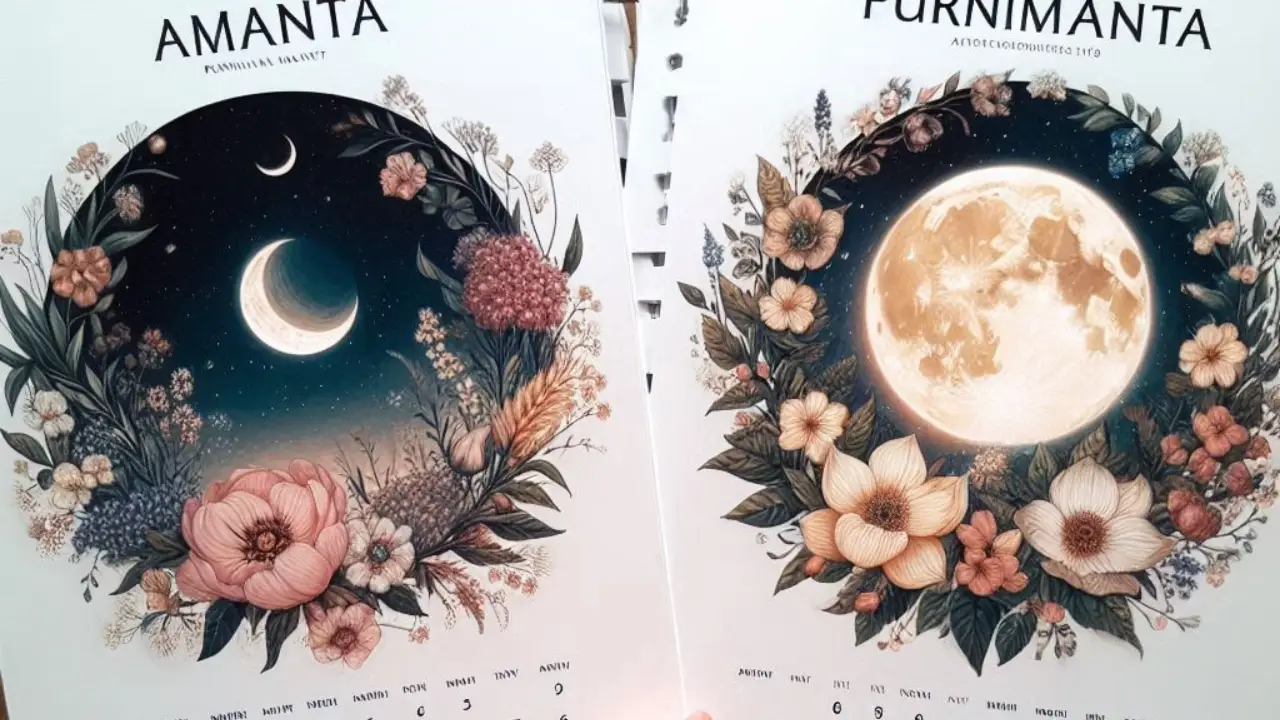Hinduism, with its rich tapestry of traditions, uses a unique lunar calendar to mark festivals, fasts, and rituals. Two primary systems are used to divide the lunar months: Amanta and Purnimanta. Both systems have their distinct methods of calculating the months, leading to differences in dates for festivals and rituals. Understanding these differences is crucial for anyone keen on Hindu practices.
The Hindu Lunar Calendar
The Hindu calendar is primarily lunar, with months starting either from the new moon (Amavasya) or the full moon (Purnima). This lunar-based system is different from the Gregorian calendar, which is solar. Consequently, Hindu festivals and religious observances are deeply connected to the phases of the moon.
Amanta System
The Amanta system, prevalent in South India, starts the lunar month with the day after the new moon (Amavasya). The term “Amanta” comes from “Ama,” meaning new moon, and “Anta,” meaning end. Thus, the month begins when the moon starts waxing after the new moon phase.
Purnimanta System
In contrast, the Purnimanta system, commonly followed in North India, begins the lunar month from the day after the full moon (Purnima). “Purnimanta” is derived from “Purnima,” meaning full moon, and “Anta,” meaning end. The month in this system starts as the moon begins waning after the full moon.
Key Differences Between Amanta and Purnimanta
The primary difference between the two systems lies in their starting points. Amanta months begin after the new moon, while Purnimanta months start after the full moon. This difference affects the way certain festivals and religious observances are calculated and celebrated.
Shravan Month: A Case Study
The month of Shravan, dedicated to Lord Shiva, is an excellent example to illustrate these differences. Shravan is highly significant for its religious observances, especially the Shravan Somvar (Mondays of Shravan), where devotees fast and pray to Lord Shiva.
In the Amanta System:
– Shravan starts after the new moon of the lunar month.
– It usually falls in the latter half of July and the first half of August.
In the Purnimanta System:
– Shravan begins after the full moon of the previous lunar month (Ashadha).
– This shifts Shravan slightly earlier, often starting in early July and ending in early August.
Festivals and Observances
Many Hindu festivals are celebrated based on the lunar calendar, and the difference between Amanta and Purnimanta systems can lead to different dates for the same festival.
Diwali:
In both systems, Diwali is celebrated on the new moon day of Kartik month. However, the preceding rituals and observances may vary slightly.
Holi:
Holi is celebrated on the full moon day of the Phalguna month. The preparations and preceding festivals might differ depending on the system followed.
Real-Life Example
Consider the festival of Janmashtami, the birth of Lord Krishna, which falls on the Ashtami (eighth day) of the Krishna Paksha (waning moon) of the Bhadrapada month. In the Amanta system, Bhadrapada starts later than in the Purnimanta system. Therefore, the exact date of Janmashtami might differ by a few days and fall in Shravan between regions following these systems.
Practical Implications
Understanding these differences is essential for those practicing Hinduism, especially if they move between regions that follow different systems. It helps in correctly observing fasts, rituals, and festivals.
Personal Story:
My distant aunt, a devout follower of Lord Shiva, moved from Tamil Nadu (Amanta system) to Delhi (Purnimanta system). Initially, she was puzzled by the different dates for Shravan Somvar. With time, she adapted and embraced the Purnimanta dates while keeping her practices intact. This personal adaptation highlights the flexibility and regional diversity within Hindu practices.
Conclusion
Both Amanta and Purnimanta systems are integral to the Hindu lunar calendar, each with its unique method of calculating months. Understanding these systems enriches our knowledge of Hindu traditions and helps us appreciate the regional diversity within the religion.
Have you experienced differences in festival dates due to regional variations? Share your stories and insights in the comments below!

